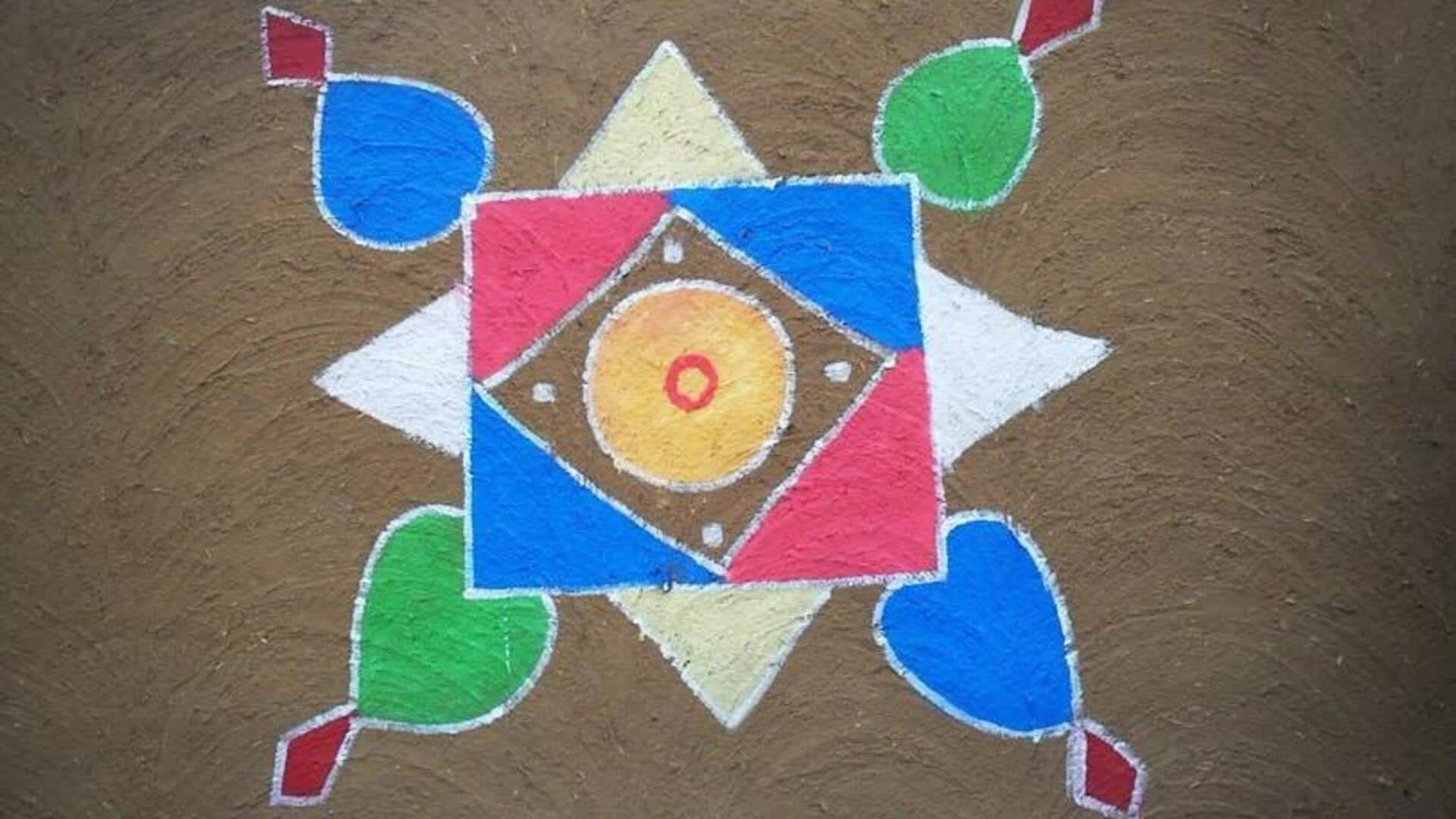
Rangoli art: Meaning behind the patterns, and how it's made
What's the story
Rangoli is a time-honored Indian art form that involves making detailed designs on the floor using substances like colored powders, rice, or flower petals.
This art is commonly witnessed during festivals and special events, playing both decorative and symbolic roles.
The patterns can vary from basic geometric shapes to complex designs inspired by nature.
Knowing the symbolism and techniques behind gives an insight into its cultural importance in India.
Cultural significance
Symbolism in Rangoli designs
Rich in cultural symbolism, rangoli designs include elements like the lotus flower, symbolizing purity, and the peacock, representing beauty.
Geometric patterns, signifying harmony, are also common.
But these motifs aren't just ornamental, they are an integral part of the storytelling process. They reflect the deep-rooted beliefs and values of Indian culture.
This tradition is a colorful representation of India's rich cultural heritage.
Traditional elements
Materials used in rangoli
Traditionally, the materials used to create rangoli are natural and easily available.
Colored powders made from rice flour or chalk are often used by artists to create bright patterns.
Flower petals are also used to add texture and fragrance to the designs. For more detailed work, grains like lentils provide an intricate touch.
All these elements together make for a rich, symbolic, and visually-striking tapestry of designs.
Artistic methods
Techniques for creating rangoli
The creation of rangoli employs various techniques, depending on the artist's skill level.
For novices, the process often begins with simple dot patterns, which are connected by lines to form basic shapes.
More advanced practitioners might opt for freehand drawing, allowing them to produce more elaborate and detailed images.
Stencils are another tool frequently used, especially useful for achieving high levels of precision in intricate designs.
Contemporary styles
Modern adaptations of Rangoli
In recent years, the evolution of rangoli has been modern, with artists using new materials such as colored sand and digital tools to create virtual designs.
The innovations have enabled a fusion of tradition and contemporary artistry, retaining the core essence of traditional rangolis.
The mix of old and new techniques has paved the way for more creativity and innovation in the art form.